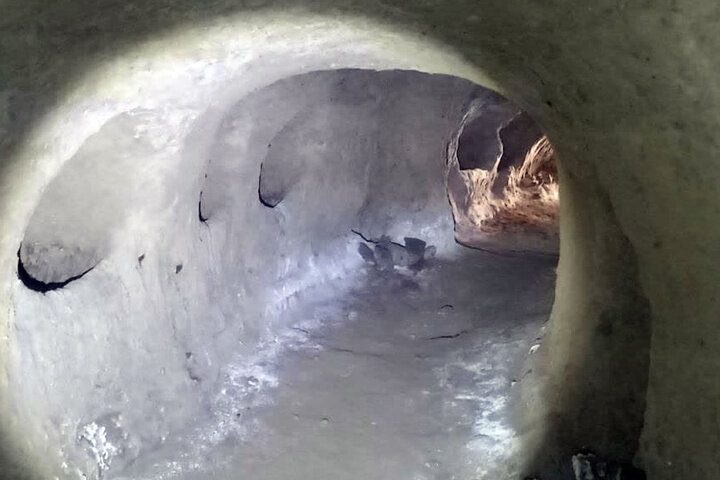Huge underground shelter exposed near previously discovered one in central Iran

TEHRAN—A massive underground ‘city’ has recently been discovered kilometers away from another ancient one that once sheltered locals from foreign invaders in Tiran-Karvan county of Isfahan province, central Iran.
Situated in Dowlatabad village, it is the second-hand-dug underground city that is discovered in Tiran-Karvan county, Tiran-Karvan’s tourism chief said on Wednesday.
The newly discovered subterranean area covers some 10,000 square meters, Mohsen Mazaheri said.
A team of archaeologists and cultural heritage experts is currently assessing the underground city to document it and determine its date, Mazaheri added.
With an area of 20,000 kilometers, the previously found area is believed to be one of the unique underground cities in the world. Named after Kord-e Olya village, where it is situated, the underground city embraces mazing corridors, 80 water wells, 80 entrances for access, as well as many rooms and halls, built for military and security use during the Parthian period.
In an interview with Iran Press, the head of the village’s tourism official, Ali Safari, said the architecture of the underground city has been built based on irregular architecture, and due to the height of the people of the Parthian period, which was over two meters, the city was a kind of military fort.
The underground city of Kord-e Olya in Isfahan dates back to 2,000 years ago and is built on three floors and has a difference in level, he said.
The entrances and exits of the underground city are sectioned one meter apart from each other and its doors open at sunrise.
Iran is a haven for ancient troglodytic architecture which is somewhat forgotten, though they are filled with life and creativity. The northwest Kandovan village is one of the most famous examples of troglodytic architecture in the country; its ice-cream cone-shaped homes resemble that of Turkey’s Cappadocia.
The Parthian Empire, also known as the Arsacid Empire, was a major Iranian political and cultural power in ancient Iran from 247 BC to 224 CE. They largely adopted the art, architecture, religious beliefs, and royal insignia of their culturally heterogeneous empire, which encompassed Persian, Hellenistic, and regional cultures. At its height, the Parthian Empire stretched from the northern reaches of the Euphrates, in what is now central-eastern Turkey, to eastern Iran.
AFM
